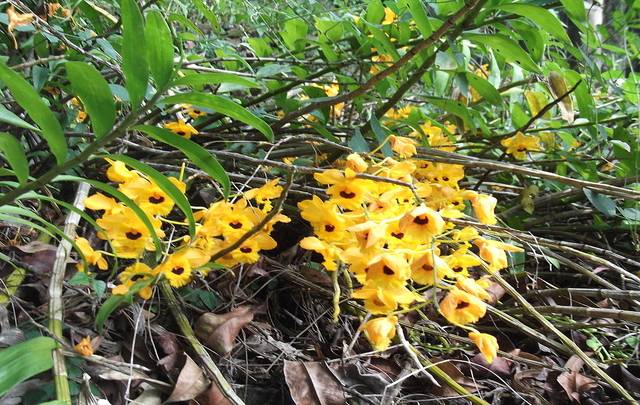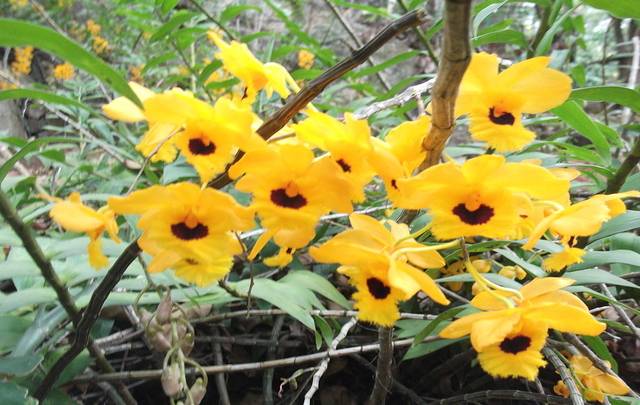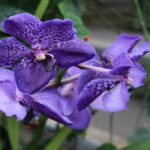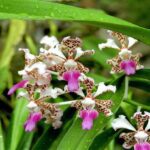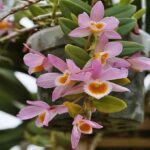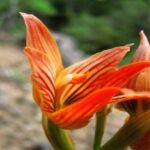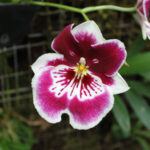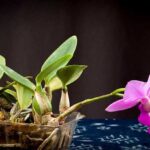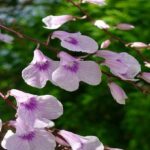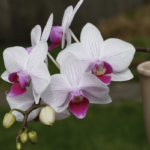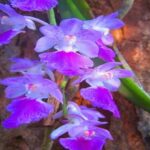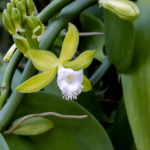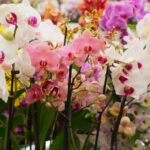The dendrobium fimbriatum is one of the most famous orchids in the dendrobium genus.
Discovered in 1823 by Willian Jackson Hooker, this orchid is of Asian origin. The most famous variety found for sale is var. Oculatum.
It is native to the following countries:
- China
- India
- Bhutan
- Malaysia
- Laos
- Vietnam
- Among others.
Continue reading this article to learn more about the main characteristics, curiosities, and cultivation tips of this orchid.
Learn How to Achieve Super Blooms on Your Orchids
🛑 If you love orchids and you're tired of not being able to make them bloom...
Then, know that thousands of beginner growers are achieving beautiful flowers on their orchids by following this method.
Click the button below to have beautiful orchids with show-worthy flowers every year. ⤵
Characteristics
The Dendrobium fimbriatum, like other dendrobiums, is mostly epiphytic, but it can also be rupicolous or terrestrial (ground).
If you don’t know the difference between these classifications, basically:
- Epiphytic: lives on trees
- Terrestrial: lives on the ground
- Rupicolous: lives on organic material on rocks
Dendrobium fimbriatum could be found in moist forests in Asia at altitudes ranging from 700 to 2400 meters (2297 to 7874 feet).
Considered large, as it can reach up to 1.5 meters (59 inches), so before cultivating it, ensure ample space for it.
An interesting fact: the name “fimbriatum” comes from Latin and means “fringed,” describing its lip.
Flowers
The flowers of Dendrobium fimbriatum are a bit different from other orchids.
- Its flowers appear on old pseudobulbs (so do not remove them)
- They resemble a bumblebee when viewed from the front
Usually, this orchid blooms between spring and summer, producing 10 to 15 flowers that can last just over a week.
These flowers are very close together, creating very beautiful and fragrant clusters, making this orchid an excellent choice for cultivation.
Cultivation of Dendrobium Fimbriatum
This is an orchid that is easy to cultivate, so even if you are a beginner in the art of growing these plants, you will find dendrobium fimbriatum quite manageable.
To take good care of it, follow these steps:
- Light: prefers plenty of light, usually 40% shading is ideal
- Where to plant: in a large clay pot or cachepot and hang them with wire. It can also be grown in plastic pots or attached to wooden trunks, trees, walls, etc.
- Humidity: should be high, as in its natural habitat, the humidity is high.
- Potting Mix: coconut husk, sphagnum moss, pine bark, charcoal. Mix these options and place pieces of styrofoam at the bottom of the pot.
- Fertilization: NPK 10-10-10 diluted in water. Usually, every 10 or 15 days is ideal. Organic fertilization every 2 months.
- Temperature: orchid that prefers warmer temperatures, usually between 20 to 31 degrees Celsius (68 to 87.8°F) is ideal, but it can withstand temperatures between 15 to 35°C (59 to 95°F). Remember to ensure that during the day, the temperature is at least 6 degrees Celsius (42.8°F) higher than at night.
- Watering: should be frequent and abundant, but just before its flowering, it should go through a water stress to flower well. Usually, this water stress occurs in winter.
Conclusion
The Dendrobium fimbriatum is an exceptional orchid because, besides being easy to cultivate, it produces large, numerous, and fragrant flowers.
If you are thinking of cultivating it, know that this is an excellent option.
If you want to learn a bit more about the Dendrobium genus, I recommend checking out the articles below:
- Dendrobium Amethystoglossum
- Cooktown Orchid (Dendrobium bigibbum)
- Dendrobium Kingianum
- Dendrobium Loddigesii
- Dendrobium Nobile
- Dendrobium Aggregatum (lindleyi)
- Dendrobium Anosmum
- Dendrobium Moschatum
- Dendrobium Densiflorum
- Dendrobium Chrysotoxum
- Dendrobium Moniliforme
- Dendrobium Thyrsiflorum
Liked this article? Help us reach more people, click on the icons below, and share this article on your social networks.

